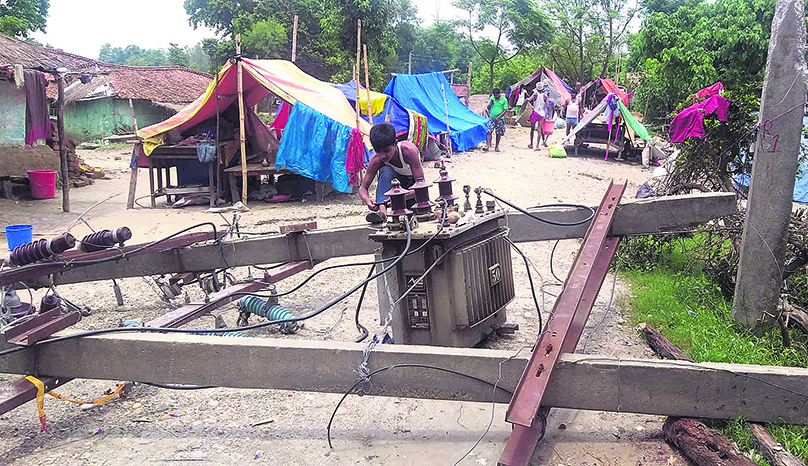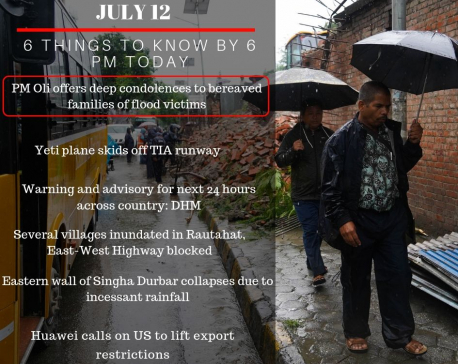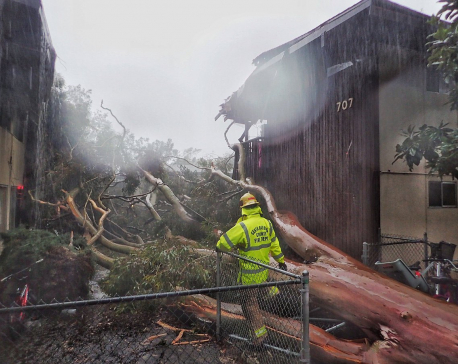
OR
'Early warning system could have minimized flood damage'
Published On: July 17, 2019 07:00 AM NPT By: Sonam Lama

KATHMANDU, July 17: Are we learning any lessons from past natural disasters? Very little, if any. According to experts, much of the loss in life and property from floods this year could have been avoided had we been prepared with an effective early warning system and rescue and relief mechanisms in place.
Since Thursday, more than 78 people have lost their lives while millions of others remain affected. Eight of the deaths occurred in the heart of Kathmandu Valley.
The country has recorded 6,656.6 mm of rainfall as of Monday, according to the Meteorology Forecasting Division. With the monsoon in full swing, rain predicted for the coming days could bring more flash floods and landslide, especially in the west. Last year the country received 8,467.8mm and 9,602.2mm of rain in July and August respectively.
Observers say the death and destructi0n are a reminder how ill prepared Nepal remains for coping with disaster. The 2015 earthquake, the floods in 2007 and the tornado earlier this year, the first of its kind recorded in Nepal, have left us none the wiser.
“Multiple factors are at play in the rising toll. For a country prone to flooding every monsoon, some unprecedented approaches are needed,” said Subhash Rimal, a meteorologist. Past lapses need to be addressed.
The Flood Forecasting Section of the Department of Hydrology and Meteorology did forecast the flooding, but it was too little too late. Officials said lack of enough radar capability hindered early warning in the highly prone areas.
“244 polygons (stations) are kept under surveillance in our system. On receiving updates on any river crossing the warning level, also known as red level, we activate the alert system and issue warnings through various media outlets,” Binod Prajuli, an official at the department, said. The message and updates on flash floods and landslides were provided through websites and social media including twitter and Facebook . The alert was also issued through SMS on Friday morning.
However, it remains unclear whether these massages actually reached the intended beneficiaries and helped minimize the damage. There have been a lot of questions over the timeliness and effectiveness of messages.
“There was no alert given through SMS or any instant means of communication in the ward. Floods during the monsoon are nothing new for tarai people but it is important to send prior alerts to areas at higher risk of flash floods and landslides,” said Zakir Hussain Miya, Ward-6 chairperson of Pheta Rural Municipality, Bara district.
In other areas, some local representatives took the lead in alerting villagers and relocating them .
In Gaur Rural Municipality-1 of Sarlahi , Ward Chairman Bharat Shah was involved in warning the villagers and helping them after receiving dam breach alerts. “We delivered the warning through mikes, " he said and stressed the need for warnings through instant mediums like radio and text messages in times of emergency.
Despite a marked rise in natural calamities over the past few years, there has been very little investment in early warning systems and a stronger institutional setup.
A Post-Event Review Capability (PERC) report titled 'Nepal flood 2017: wake up call for effective preparedness and response' published by PreventionWeb in 2018 emphasized the need for disaster risk reduction, preparedness, responses and recovery .
Disaster Risk Reduction Expert and Consultant at UNICEF and UNDP, Sunil Sun Shakya, has emphasized the need for a range of measures from prevention to preparedness when it comes to disaster risk reduction.
“Disaster prevention and mitigation measures eliminate the risks and hazards before an emergency hits,” said Shakya.
You May Like This

Source of sorrows
When floods and inundations wreak havoc in Nepal’s Tarai plains and elsewhere the issue raised every year is about illegally... Read More...

July 12: 6 things to know by 6 PM today
Your daily dose of missed important news of the day. ... Read More...

Powerful storm hits Southern California, flooding highways
LOS ANGELES, Feb 3: The second in a string of powerful storms battered California on Saturday, shutting key highways after... Read More...




Just In
- CM Kandel requests Finance Minister Pun to put Karnali province in priority in upcoming budget
- Australia reduces TR visa age limit and duration as it implements stricter regulations for foreign students
- Govt aims to surpass Rs 10 trillion GDP mark in next five years
- Govt appoints 77 Liaison Officers for mountain climbing management for spring season
- EC decides to permit public vehicles to operate freely on day of by-election
- Fugitive arrested after 26 years
- Indian Potash Ltd secures contract to bring 30,000 tons of urea within 107 days
- CAN adds four players to squad for T20 series against West Indies 'A'














Leave A Comment